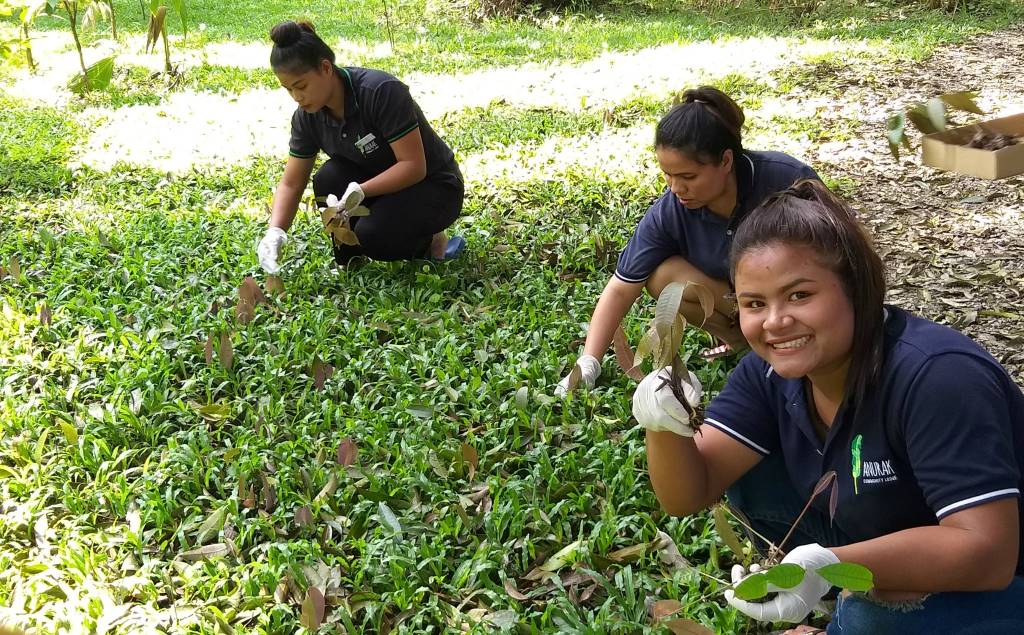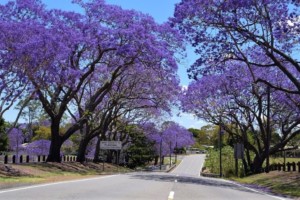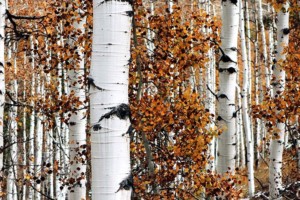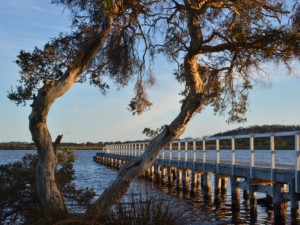Good news in tourism Apr 26 to May 2, 2020

Published Sunday to be ready Monday, “Good news in tourism” is the perfect pick-me-up for the start of a new week in travel & tourism. And go!
Your correspondent had a scare Monday night when news came through that his hero, his father, had been rushed to hospital in Perth with a cabinet of nasty symptoms. (It wasn’t COVID-19.) Then with a regional travel exemption secured faster than expected, your correspondent made the five-hour road trip north from Walpole on Tuesday. At writing this paragraph mid-afternoon on “Good news in tourism” day (Sunday), your correspondent had just driven the patient back home from the hospital … And that is indeed good news.
To skip to this week’s news links, scroll down to the next sub-heading:
Despite the health scare in his immediate family this week your correspondent has endeavoured to keep up with what’s new to bring you your weekly fix of “Good news …”. It’s a mercy mission for all you beleaguered tourism industry folk who look forward to a generous serve of old-school can-do positivity paired with refreshing reality. Your correspondent understands that you are likely among the “silent majority”; the long tail of the industry unrepresented by the chattering classes. You get along with everyone and get on with doing the best you can; learning from mistakes but not overthinking or beating yourself up over every. single. suboptimal. outcome. past. present. future. Some in our industry’s chattering classes would have you fret over every tiny perceived slight or misstep lest it aggress another. Not “GT”.
[And, shhhhhh, you might even secretly think that some of that nasty overtourism would be nice about now, hey? … Not indefinitely, of course; host communities tend to hate overtourism; it benefits no-one in the long run; and it needs to be fixed by listening to host communities. Buuuut overtourism is better than notourism, right? Your livelihood is at stake. You are definitely over notourism.]
So … How much tourism? “What would ‘‘good tourism’’ be?” Susan Briggs asks, writing for the Yorkshire Post in England: “For the first time ever, we have an opportunity to think about the kind of tourism we want in Yorkshire […] Now is the ideal time to think about how we might reduce our impact on the world by encouraging more sustainable tourism. Which aspects of Yorkshire deserve most promotion? What kind of visitors do we want to welcome? What new ideas can we add? Residents and businesses all need to be included in the debate. This is our chance to shape the tourism of tomorrow.”
Whether it’s in England’s Yorkshire, York in Western Australia, or New York City, the tourism industry’s very existence, let alone composition, should be a place-by-place proposition determined by the people who call those places home.
Good travellers know when they are not welcome. A good tourism industry should know that too. No excuses.
The seeds of recovery

Here’s a choice tidbit brought to your correspondent’s attention on Monday by a prospective “GT” partner. Anurak Community Lodge in southern Thailand has launched ‘Rainforest Rising’, a tree-planting initiative. Guests can pay for and plant tree saplings to return two rai (3,226 sqm; 0.8 acres) of former palm oil plantation into indigenous lowland evergreen forest by 2023. Anurak’s longer term goal is to make a further 10 rai (four acres) of land indistinguishable from the adjacent Khao Sok National Park.
In a much wetter replanting program, five tour companies have signed up for the Coral Nurture Program, a partnership between tourism and science to look after the Great Barrier Reef on Australia’s east coast. The tour operators, which have a lot of excess capacity on their hands right now, are ferrying marine biologists out to the reef instead of tourists. There they perform a reef rehabilitation technique called coral clipping.
Communities in Palawan, the Philippines, which usually earn from tourism, continue to look after protected areas during coronavirus-related lockdown, ensuring that illegal logging and fishing do not make a comeback. Thanks to good financial management in the past they can afford to keep their nature-based tourism dreams alive without income for about a year without outside help.
Speaking of “Keeping the Dream Alive”, a webinar series of that name is underway “to help the industry through the COVID-19 crisis with insights from some of the most respected authorities in our travel industry”. It is organised by “GT” Insight Partner the World Tourism Association for Culture & Heritage (WTACH). Register here for upcoming instalments. And listen to podcast recordings of those that have happened.
And while we’re in the vicinity of culture & heritage, Sonto Ndlovu, CEO of the Limpopo Tourism Agency in South Africa wrote about how now was the perfect time to elevate intercultural tourism in Africa: “The current reality is that as Africans we know very little if at all, about each other’s cultures, history, traditions or languages. How many in Botswana, Kenya, Rwanda, Ghana, Nigeria, Morocco, Congo know about South African cultures and vice versa? This is the perfect time that when the skies reopen, we, Africans in Africa set out on a voyage of cultural tourism and travel to other African states to learn more about our cultures. Imagine what this could do in instilling African pride, dealing with issues of xenophobia and changing perceptions amongst Africans.”

COVID Ops: Domestic tourism & the great outdoors
While many destinations are primarily focusing on domestic tourism in the short term, Australia and New Zealand are seriously considering a “trans-Tasman bubble” for the resumption of “normal” travel, tourism, and trade between them. Thanks as much to their isolation and low population densities as their policies, both island nations have been able to “flatten the curve” of SARS-CoV‑2 contagion faster than most others. Both are very important travel & tourism source markets for each other, particularly the more populous Australia (~ 25 million) for destination New Zealand (~ 5 million). And both offer plenty of wide open spaces in which to self-isolate and explore.
In Hong Kong, where there is little space, the first phase of tourism recovery will be to encourage locals to “rediscover different neighbourhoods and community cultures” within their city, according to Hong Kong Tourism Board Executive Director Dane Cheng. HKTB Chair YK Pang reckons domestic travel will be the “major preference shortly after the pandemic”. Outbound travel will resume soon after. As for source markets, Pang expects Chinese mainland holiday-makers to become “more price-conscious and pursue value-for-money” with more emphasis on health and nature. In Japan, Korea and Taiwan, “the young and middle-aged segments will be the most eager to travel.”
Early in the week nearly 100,000 people had signed a petition calling on President of France Emmanuel Macron to allow access to nature during lockdown. The petitioners claim that not allowing access to natural spaces “damages our physical and mental health”. The petition calls for access “on condition that social distancing rules are strictly respected [and] for activities that offer objectively no more risk than domestic activities or gardening […] We would allow the authorities to define the context, including ways to prevent too many people from visiting.”
Turkey is preparing to open up domestic tourism by the end of May, if all goes well. The country is setting new rules and guidelines for transportation, airports, hotels, restaurants, museums, and archaeological sites, even down to the spacing between sunbeds on beaches, and bans on all-you-can-eat buffets in some places. [Callback: The propensity for all-inclusive tours to lay on all-you-can-eat feasts may be contributing to obesity among those who can afford such trips, according to Professor Erdogan Koc of Turkey’s Bandirma Onyedi Eylul University in a “GT” Insight from 2017.]
Maris Nogu, a tourism academic at the Estonian Entrepreneurship University of Applied Sciences, said that domestic tourism in Estonia will likely see a good summer: “It is quite clear that people will be driving around Estonia this summer and looking for undiscovered places.” To avoid crowds Estonians will look for “smaller locations and tourist farms alongside large spa hotels”, she reckons. Around Tallinn nature tourism is “already very active”. Estonia’s government on Monday approved a EUR 35 million (USD 38 million) aid package for the tourism sector, EUR 10 million of which is for micro and small enterprises.
Ballyhoura Country, a region of North County Cork in Ireland is forging ahead with the launch of a new website and campaign recognising that domestic tourism will be key “over the coming couple of years”. Tourism Marketing Officer for the region Jana Mannion said: “It is important to stay positive, plan ahead and find new opportunities. Now it’s time to boost awareness, so when this is over, and travel demand is released, we are on top of the game.”
The economic revival committee for Goa state in India has pitched for tourism to be made more inclusive through the development of ecotourism, village tourism, adventure tourism, forest tourism, and cultural tourism in the hinterland. “Goa needs tourism based on carrying capacity and regulated with quality and class …”
Tourism Division Director of North Dakota, USA, Sara Otte Coleman reckons “we are well-positioned to have a good summer” as officials focus their marketing close to home. “In the days of social distancing amid the pandemic, North Dakota’s wide-open spaces present a range of outdoor activities, such as hiking and fishing.”
Yankton in South Dakota, USA is also “set up pretty well” according to Kasi Haberman, Director of the Convention & Visitors Bureau. “We’re a smaller market — the larger markets are going to be much more impacted […] We have more mid-priced and economy hotels […] faring much better than the luxury hotels.” And South Dakota’s state parks remain open unlike those in neighboring Nebraska and Iowa.

Similarly, New Hampshire, USA, will focus its marketing efforts on local markets and those within driving distance, according to Lori Harnois Director of the Division of Travel & Tourism. Realtor Frank Roche reckons there will be “a lot of pent-up demand” from people to get out into the summer sun. Based on what he saw after 9/11, he thinks city people will be drawn to the New England region’s space both for a break and to buy property. “After 9/11, people were so panicked in the cities a lot of them bought a place where they could isolate in Vermont, New Hampshire, Maine — getaway places.”
Good news for anglers from Alaska, USA. Recreational fisheries remain open and the public may travel to them this summer. “But guidelines issued by the state aim to eliminate exposure to communities near those destinations. Fishers are required to take precautions like social distancing and wearing masks. They will also have to bring their own provisions from home to prevent them from going into communities for food or fuel, and must abide by the local mandates of their destination.”
Also in Alaska, Denali National Park has reopened a portion of its main access road, with more to open as conditions and staffing allow. “For now, the public will have access to all trails and open spaces along the park road, up to the Mountain Vista Rest Area, including the Riley Creek Day-Use Area.”
Don’t let a crisis go to waste
To skip this opportunity, simply scroll down to the next subheading …
How about reflecting on your achievements, mistakes, and lessons learned; outlining your vision for the future of travel & tourism; telling the story of your “Good Tourism” journey, whatever “good” means to you; sharing your “GT” Insights? ← Opportunity.
Can’t write? Nonsense! Of course you can. And your correspondent will help you by proof-reading and lightly editing your “GT” Insight to ensure your happiness before it goes live. It’s all part of the “GT” service for “GT” Friends. ← ↑ Opportunity!
⇈ OPPORTUNITY! ⇈
Subscribe to “GT’s” weekly e‑news (it’s free) and follow “GT’s” various socials, such as its LinkedIn page. And if you find “GT” inspiring, interesting, somewhat amusing, or at least different then surely it’s worth a little something to you.
Please …
It would mean a big something to “GT”!
Thank you very much to those who have donated. 🙂 Note: Given “GT’s” propensity to rattle cages occasionally, your correspondent’s starting assumption is that donations should be kept private and confidential. If, however, you wish to be publicly associated with supporting “GT” that would be brilliant. Please make that unambiguously clear by correspondence. Thank you!
Electric aviation
Rolls-Royce says it will continue to test the hybrid-electric power generation system it was developing for the Airbus E‑Fan X, despite the programme’s cancellation only a year before the demo was due to fly. The news of the cancellation prompted your correspondent’s rambling rant in last week’s “Good news …”.
In Canada, a new Canadian Air Mobility Consortium plans to “lay the foundations for advanced air mobility across the nation, including drone delivery and passenger/cargo air taxis, with an emphasis on sustainability offered by electric aircraft”. To comprise government, academia, industry and investor partners, the Consortium will “conduct an economic analysis, develop operational and scenario applications, and then hold a demonstration event”.
“The X‑57 Maxwell, NASA’s first piloted X‑plane in two decades [will not have] the blistering performance of its predecessors. It’s not going to fly very fast, it won’t be making any high‑G turns, and it certainly won’t be clawing its way through the upper atmosphere. […] But like previous X‑planes, the Maxwell will one day be looked back on as a technological milestone of its own.” An electric aircraft, the X‑57 is a modified twin-engine Tecnam P2006T, one of the lightest planes in its class. The experiments NASA performs with the plane will guide certification programs and legislation for electric aviation in the USA.
EHang from China is betting on autonomous electric vertical takeoff & landing (eVTOL) aircraft for the urban air mobility market. With no pilot to pay, EHang’s largest drone-like autonomous aerial vehicle (AAV) model can carry two paying passengers. But is it safe? In 2018 the company set a Guinness World Record by flying 1,374 drones “in formation for more than 13 minutes, forming different images that stretched nearly a mile”. Those small autonomous drones could fly as close as two inches apart without incident, the company claims, implying that when scaled up to carry people their AAV technology should be safe.
Beta Technologies, an eVTOL aircraft startup, is seeking approval for a building lease at Burlington International Airport in Vermont, USA. Owner & founder Kyle Clark envisions Burlington as the hub for a corridor of charging pads across the Northeast. “And it’ll be the beginning of a recharging corridor for sustainable zero-emissions aircraft that will be moving medical supplies and organs up and down the East Coast first all the way down to the Mayo Clinic down in Jacksonville.”

Odds & ends
Newsy bits that don’t easily fit into this week’s arbitrary clusters:
If a buyout deal between the residents of Wanlockhead, Scotland’s highest village, and the Duke of Buccleuch, one of the nation’s largest landowners, goes ahead some 3,863 acres, including the village, will be handed over to locals. “Ambitious new plans have emerged which could see the Leadhills village and the area around it make a stunning return to winter sports, and enter a new age as a mountain resort with gold-panning, glamping, cycling, wildlife tourism and festivals attracting a new generation of visitors.”
In Virginia, USA, historians, environmental groups, and tourism professionals are among “a diverse bunch to befriend all of Culpeper County’s Civil War battlefields”. They’ve banded together to support “preservation, stewardship and heritage tourism”.
“It’s more fun in the Philippines!” But perhaps not quite as fun as it used to be since the passing of Ramon Jimenez Jr, April 27, 2020, aged 64. As Tourism Secretary from 2011 to 2016, “Sec Mon”, an advertising creative by profession, oversaw the “fun” campaign as well as his beloved country’s first national tourism development plan. RIP Sec Mon.
On that sobering note, be reminded that a full life and a life full of achievement is worth celebrating, so … Have fun! And have a good week!
Featured image (top of post): Reeth, Yorkshire, England. By Emphyrio (CC0) via Pixabay.
To help your correspondent keep his energy-efficient lights on, please consider a private one-off gift or ongoing donation. THANK YOU to those who have! <3
You are a tourism stakeholder — yes, YOU! — so what’s your view? Do you disagree with anything you have read on “GT”? Join the conversation. Comment below or share your “Good Tourism” Insights. Diversity of thought is welcome on The “Good Tourism” Blog.
Disclaimer 1: It is “GT’s” policy to fully disclose partner/sponsor content. If an item is not disclosed as partner or sponsor-related then it will have caught “GT’s” attention by some other more organic means. Partner with “GT”. You know you want to.
Disclaimer 2: None of the stories linked from this week’s post have been fact-checked by “GT”. All terminology used here is as the linked sources used it according to the knowledge and assumptions they have about it. Please comment below if you know there has been buzzword-washing or blatant nonsense relayed here, but be nice about it as the linked sources might get offended. (“GT” won’t.) And as for “GT” bringing it to your attention so that you might be the one to set the record straight, you are welcome! 🙂





